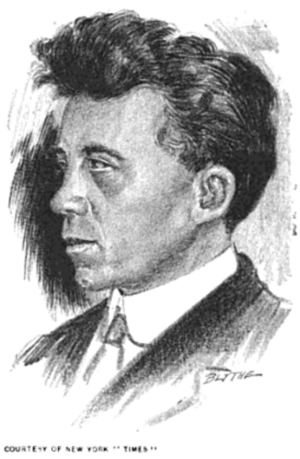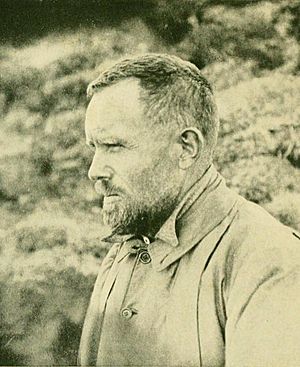Canadian Arctic Expedition, 1913–1916 facts for kids
The Canadian Arctic Expedition was a big science trip to the Arctic Circle that happened between 1913 and 1916. It was organized and led by an explorer named Vilhjalmur Stefansson.
At first, two groups from the United States, the National Geographic Society and the American Museum of Natural History, were going to pay for the trip. But then, Canada decided to take over the sponsorship. This was because they hoped the expedition might discover new land. Stefansson, who was born in Canada but had become an American citizen, changed his citizenship back to Canadian for the expedition.
The expedition was split into two main groups:
- The Northern Party, led by Stefansson himself.
- The Southern Party, led by Dr. R.M. Anderson.
Contents
Exploring the North: The Northern Party
The main goal for the Northern Party was to search for new land. They looked north and west of the parts of the Canadian Arctic that people already knew about. At that time, scientists thought it was possible there might be huge, undiscovered land masses. These could have been as big as the Canadian Arctic islands or even a small continent!
Besides just looking for land, the Northern Party also planned to:
- Measure the depth of the ocean through the ice to map the edge of the continental shelf.
- Study the weather (meteorology).
- Investigate Earth's magnetic field.
- Learn about the plants and animals living in the sea (marine biology).
Studying the South: The Southern Party
The Southern Party had a different job. Their goal was to carefully record information about the land, rocks, natural resources, wildlife, and people in certain parts of Canada. They focused on the Mackenzie River delta and nearby areas. This included regions between Cape Parry and the Kent Peninsula, going about 100 miles inland. They also explored the southern and eastern parts of Victoria Island. They were especially interested in finding copper deposits and learning about trade routes.
What Happened and What They Found
The year 1913 was very difficult for ships traveling in the Arctic. All the expedition's ships got stuck in the ice before they could even reach their first stop, Herschel Island. The main ship, the Karluk, was carried away by the ice and eventually crushed. Sadly, eleven people lost their lives before a famous rescue took place.
Most of the Southern Party members had traveled on other ships. Stefansson himself left the Karluk with five other people before it drifted away. After the Karluk was lost, Stefansson quickly bought a small boat called the North Star. He then put together a new Northern Party with local helpers and continued exploring. Only one of the fourteen people who survived the Karluk disaster rejoined the expedition. In 1915, the expedition bought another ship, the Polar Bear.
The Southern Party stayed in the North through the summer of 1916. They explored and mapped areas as far east as Bathurst Inlet. Some members of the Northern Party kept exploring even longer, until 1918.
Despite the challenges, the expedition made many important discoveries:
- They found land that was previously unknown, even to the Inuit people. This included Brock, Mackenzie King, Borden, Meighen, and Lougheed Islands.
- They collected a lot of valuable scientific information.
- The expedition helped start the careers of several important explorers and scientists.
See also
- Diamond Jenness
- Robert Bartlett (explorer)
- Hubert Wilkins
- Christian Theodore Pedersen
- Voyage of the Karluk
- Ernest de Koven Leffingwell



